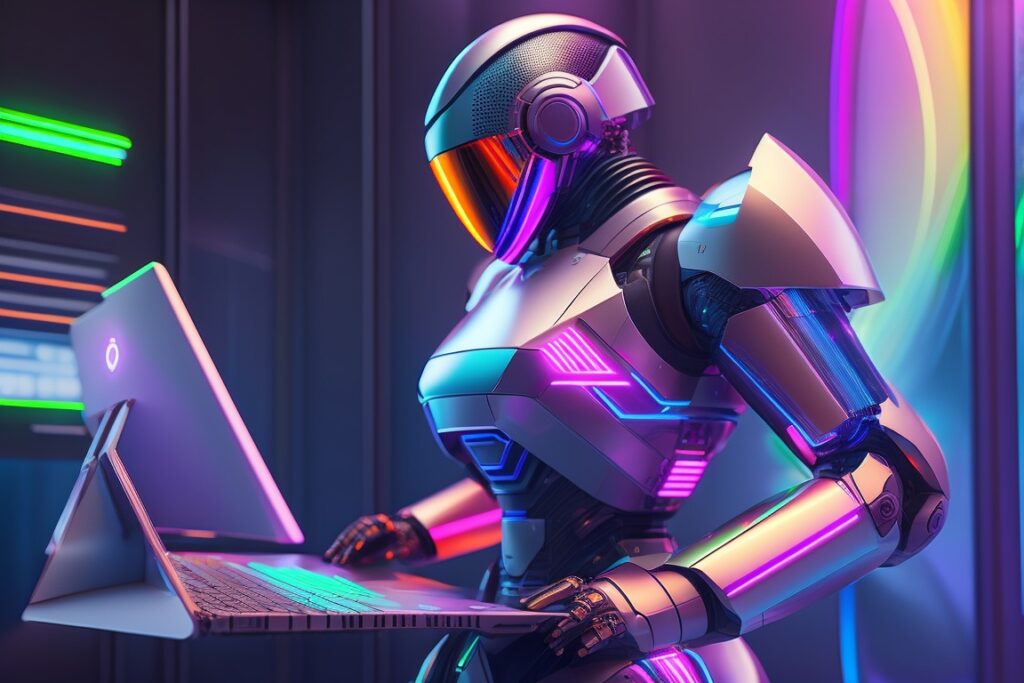Can AI Write a Detailed Data-Driven Creative Brief?
Introduction
In the world of advertising and marketing, a well-crafted creative brief is the cornerstone of any successful campaign. It serves as a guiding document that outlines a marketing initiative’s objectives, target audience, key messages, and desired outcomes. Traditionally, human professionals with a thorough understanding of the brand, its values, and the target market have written creative briefs. However, with the advent of artificial intelligence (AI) and its growing capabilities, the question arises: Can AI write a detailed data-driven creative brief?

What is a creative brief?
Before diving into the role of AI in creative brief writing, let’s first understand what a creative brief is. A creative brief is a concise document that provides a roadmap for creative teams, including copywriters, designers, and strategists, to develop compelling and effective marketing materials. It captures essential information such as the campaign’s objectives, target audience demographics, key messaging, desired tone, and any specific brand guidelines.
Importance of a creative brief
A well-crafted creative brief plays a crucial role in ensuring the success of a marketing campaign. It serves as a communication tool that aligns the client’s expectations with the creative team’s understanding of the project. It helps in setting clear goals, defining the target audience, and establishing a creative direction. A comprehensive creative brief acts as a foundation for the development of persuasive and impactful marketing materials.
The role of AI in creative brief writing
AI has already made significant strides in various industries, and its potential in the field of creative brief writing is gaining attention. AI systems can analyze large volumes of data and extract valuable insights to inform the creative process. By leveraging machine learning algorithms and natural language processing (NLP) techniques, AI can generate content and recommendations based on historical data, industry trends, and consumer preferences.
Benefits of AI in creative brief writing
AI-powered creative brief writing offers several benefits. Firstly, AI can quickly process vast amounts of data, enabling it to analyze market trends, consumer behavior, and competitor strategies. This data-driven approach helps identify key insights and understand audience preferences, leading to more targeted and effective creative briefs.
Secondly, AI can automate repetitive tasks involved in creative brief writing, such as collecting data, organizing information, and generating initial drafts. This frees up valuable time for human professionals to focus on higher-level tasks that require creativity and strategic thinking.
Thirdly, AI can assist in ideating content variations and testing different creative concepts. By rapidly generating multiple options, AI can help creative teams explore different directions, assess their potential impact, and refine their ideas based on data-driven insights.
Limitations of AI in creative brief writing
Despite the benefits, AI has certain limitations when it comes to writing creative briefs. While AI can analyze data and generate content, it lacks the ability to understand the subtleties of human emotions, cultural nuances, and context-specific factors. Creative briefs often require a deep understanding of the target audience’s psyche, which is challenging for AI to fully comprehend.
Moreover, AI may struggle with abstract concepts and the development of truly innovative and groundbreaking ideas. Creative briefs often require a human touch to think outside the box and come up with original approaches that captivate and engage the audience.
Human vs. AI: A collaborative approach
Rather than viewing AI as a replacement for human creativity, a more fruitful approach is to see it as a tool for enhancing and augmenting human capabilities. The collaboration between AI and human professionals can lead to more powerful and effective creative briefs.
Human professionals bring a wealth of experience, intuition, and the ability to think creatively. They can provide the contextual understanding, emotional depth, and storytelling elements that AI currently lacks. By working alongside AI systems, human professionals can leverage data-driven insights to make informed decisions, test hypotheses, and refine their creative ideas.
Enhancing AI capabilities in creative brief writing
To enhance AI capabilities in creative brief writing, several advancements can be made.
- Natural language processing (NLP): Improving AI’s understanding of human language and context is crucial. NLP algorithms can be refined to better grasp idiomatic expressions, sarcasm, humor, and other linguistic nuances that are vital for crafting effective creative briefs.
- Machine learning algorithms: Continuous improvement of machine learning algorithms can enhance AI’s ability to generate content that aligns with brand guidelines and resonates with target audiences. Algorithms can learn from successful past campaigns and adapt to changing market dynamics.
- Data-driven insights: AI can benefit from access to a diverse range of high-quality data. This includes consumer behavior data, market research, social media analytics, and industry-specific insights. By utilizing comprehensive and up-to-date data, AI systems can generate more accurate and relevant recommendations.
The future of AI in creative brief writing
The future of AI in creative brief writing holds great potential. As AI continues to advance, we can expect it to become more proficient at understanding and generating creative concepts. The collaboration between AI and human professionals will likely become seamless, with AI systems acting as intelligent assistants throughout the creative process.
AI-powered tools may also emerge that can generate multiple creative brief options based on specific inputs and preferences, making the process more efficient and effective. These tools could offer real-time insights, predictive analytics, and personalized recommendations, empowering creative teams to develop compelling marketing campaigns.
How Alison.ai can help
Alison analyzes elements such as characters, colors, sounds, text, and more and cross-references these elements with your campaign performance data. We then arm you with a detailed data-driven creative brief prompt, which you can use to feed your generative AI creative production platform or your human creative team. This approach allows you to dive deep into the performance of these elements in your ad campaign and only focus on the creative elements that resonate with each audience.
To learn more about Alison.ai’s advanced creative analysis capabilities, click here to request a demo!
